Zepeng Huai
M2GNN: Metapath and Multi-interest Aggregated Graph Neural Network for Tag-based Cross-domain Recommendation
Apr 16, 2023Abstract:Cross-domain recommendation (CDR) is an effective way to alleviate the data sparsity problem. Content-based CDR is one of the most promising branches since most kinds of products can be described by a piece of text, especially when cold-start users or items have few interactions. However, two vital issues are still under-explored: (1) From the content modeling perspective, sufficient long-text descriptions are usually scarce in a real recommender system, more often the light-weight textual features, such as a few keywords or tags, are more accessible, which is improperly modeled by existing methods. (2) From the CDR perspective, not all inter-domain interests are helpful to infer intra-domain interests. Caused by domain-specific features, there are part of signals benefiting for recommendation in the source domain but harmful for that in the target domain. Therefore, how to distill useful interests is crucial. To tackle the above two problems, we propose a metapath and multi-interest aggregated graph neural network (M2GNN). Specifically, to model the tag-based contents, we construct a heterogeneous information network to hold the semantic relatedness between users, items, and tags in all domains. The metapath schema is predefined according to domain-specific knowledge, with one metapath for one domain. User representations are learned by GNN with a hierarchical aggregation framework, where the intra-metapath aggregation firstly filters out trivial tags and the inter-metapath aggregation further filters out useless interests. Offline experiments and online A/B tests demonstrate that M2GNN achieves significant improvements over the state-of-the-art methods and current industrial recommender system in Dianping, respectively. Further analysis shows that M2GNN offers an interpretable recommendation.
AMinerGNN: Heterogeneous Graph Neural Network for Paper Click-through Rate Prediction with Fusion Query
Aug 15, 2022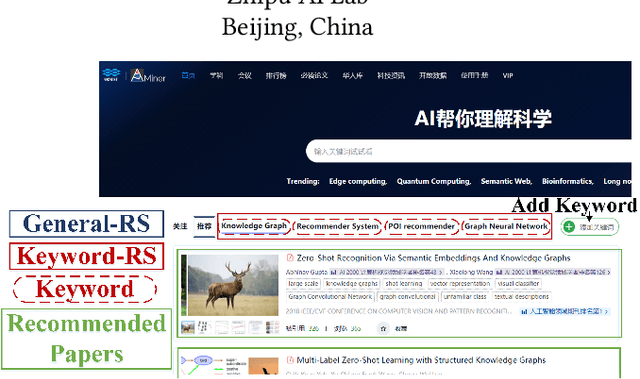
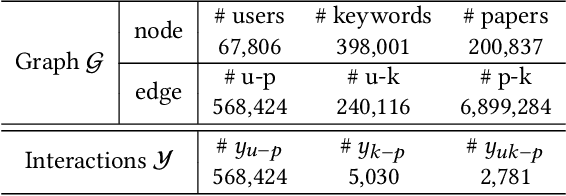
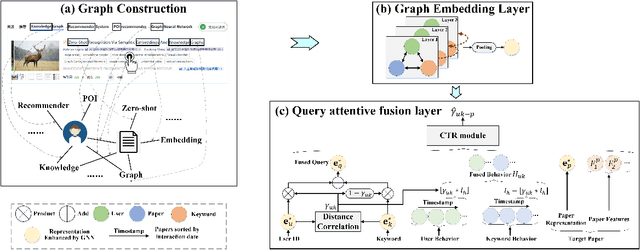
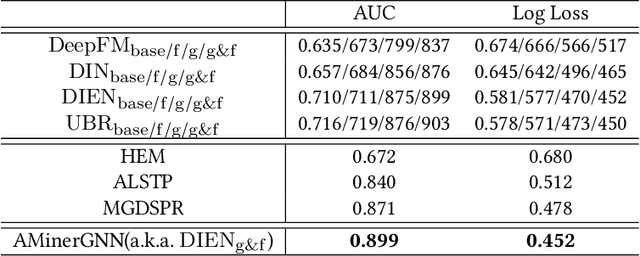
Abstract:Paper recommendation with user-generated keyword is to suggest papers that simultaneously meet user's interests and are relevant to the input keyword. This is a recommendation task with two queries, a.k.a. user ID and keyword. However, existing methods focus on recommendation according to one query, a.k.a. user ID, and are not applicable to solving this problem. In this paper, we propose a novel click-through rate (CTR) prediction model with heterogeneous graph neural network, called AMinerGNN, to recommend papers with two queries. Specifically, AMinerGNN constructs a heterogeneous graph to project user, paper, and keyword into the same embedding space by graph representation learning. To process two queries, a novel query attentive fusion layer is designed to recognize their importances dynamically and then fuse them as one query to build a unified and end-to-end recommender system. Experimental results on our proposed dataset and online A/B tests prove the superiority of AMinerGNN.
Knowledge graph enhanced recommender system
Dec 17, 2021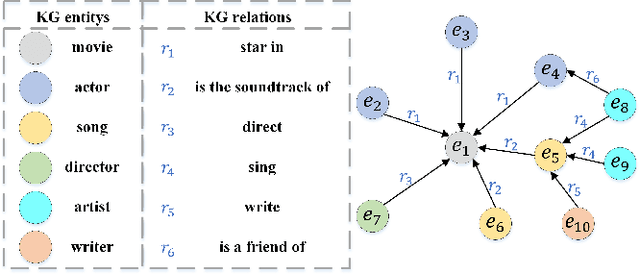
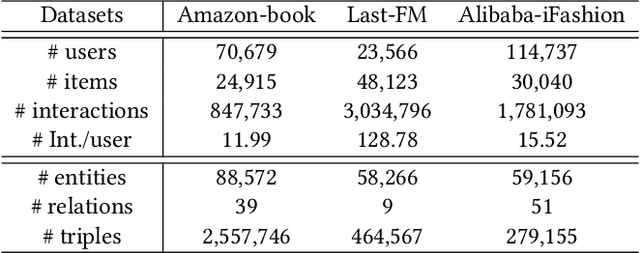
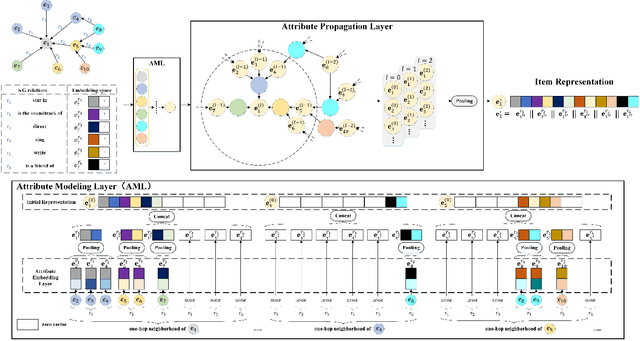

Abstract:Knowledge Graphs (KGs) have shown great success in recommendation. This is attributed to the rich attribute information contained in KG to improve item and user representations as side information. However, existing knowledge-aware methods leverage attribute information at a coarse-grained level both in item and user side. In this paper, we proposed a novel attentive knowledge graph attribute network(AKGAN) to learn item attributes and user interests via attribute information in KG. Technically, AKGAN adopts a heterogeneous graph neural network framework, which has a different design between the first layer and the latter layer. With one attribute placed in the corresponding range of element-wise positions, AKGAN employs a novel interest-aware attention network, which releases the limitation that the sum of attention weight is 1, to model the complexity and personality of user interests towards attributes. Experimental results on three benchmark datasets show the effectiveness and explainability of AKGAN.
 Add to Chrome
Add to Chrome Add to Firefox
Add to Firefox Add to Edge
Add to Edge